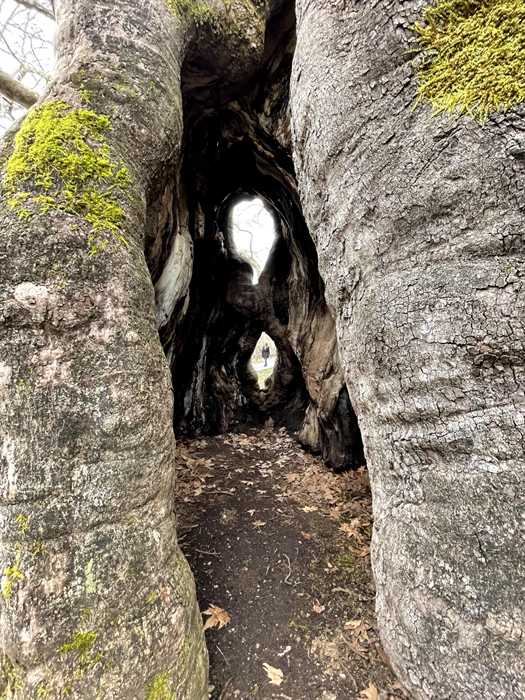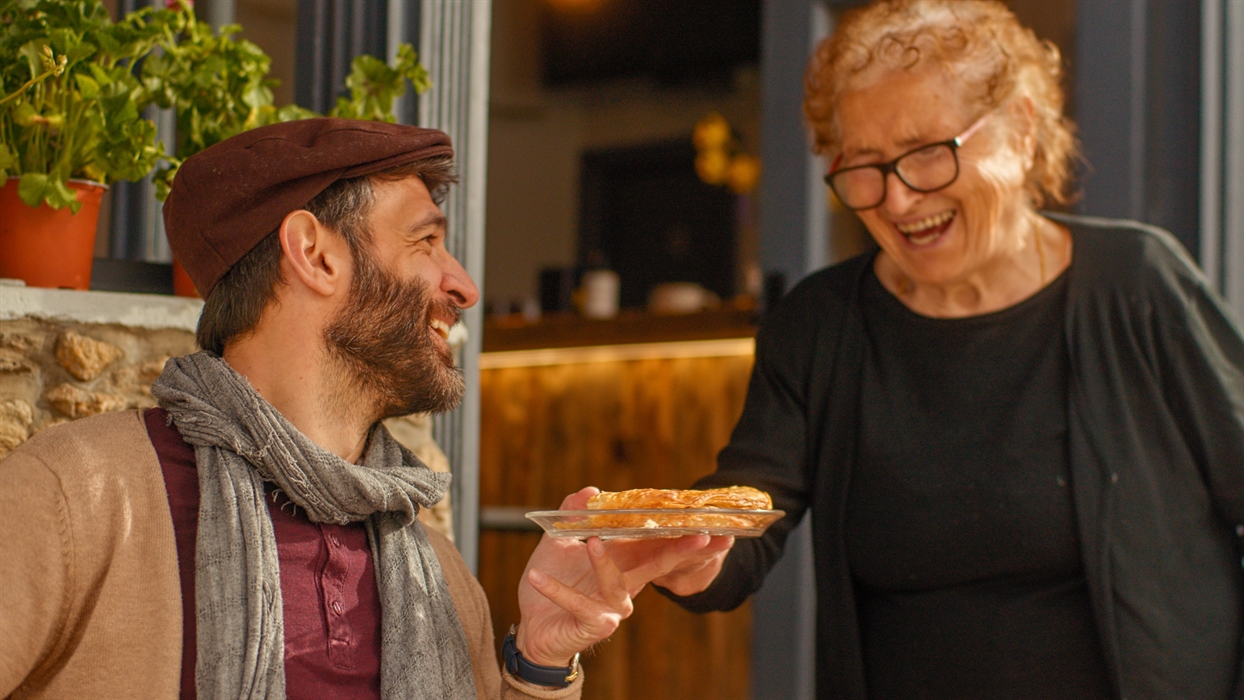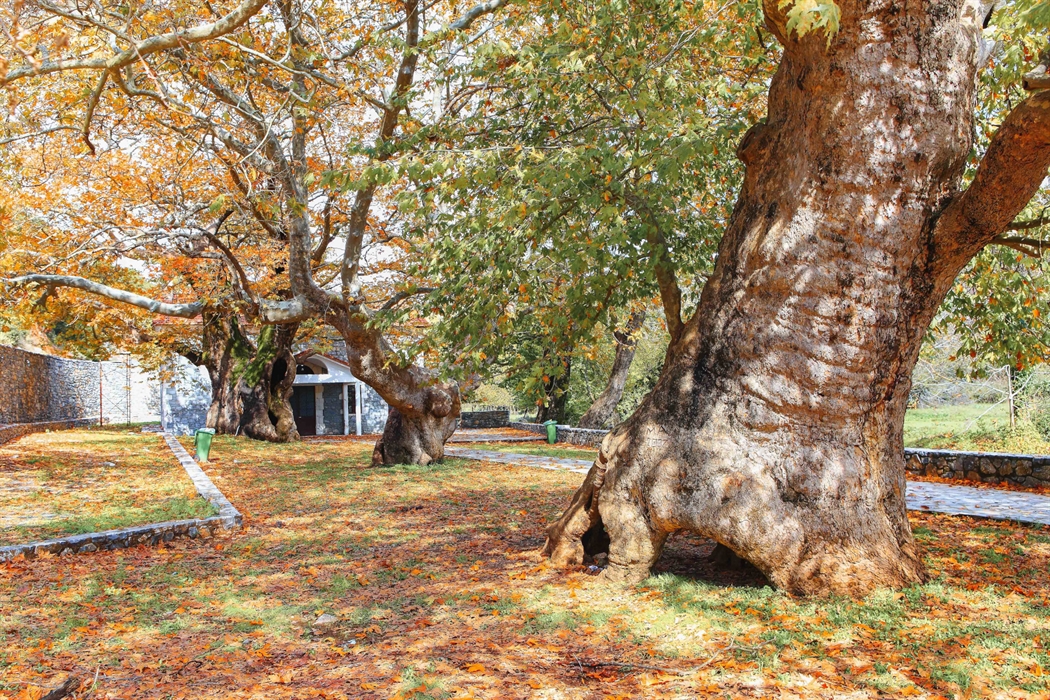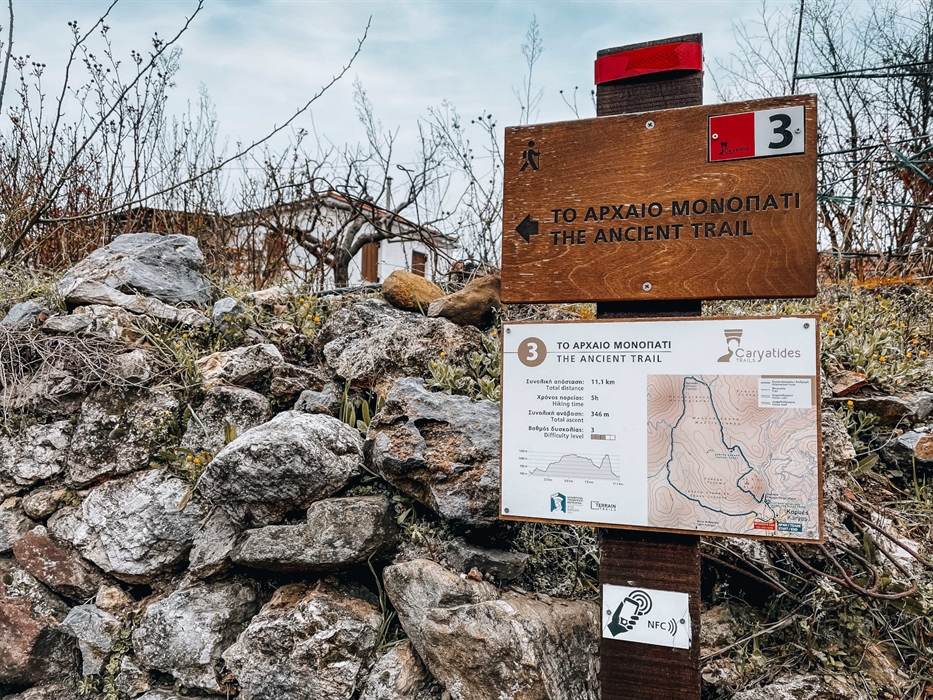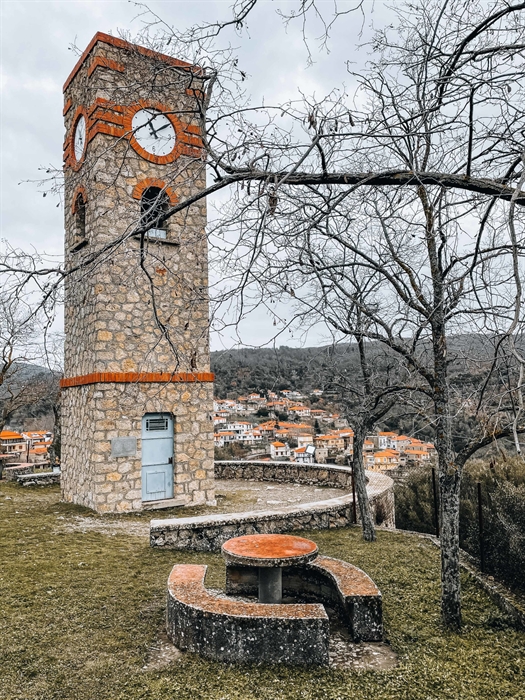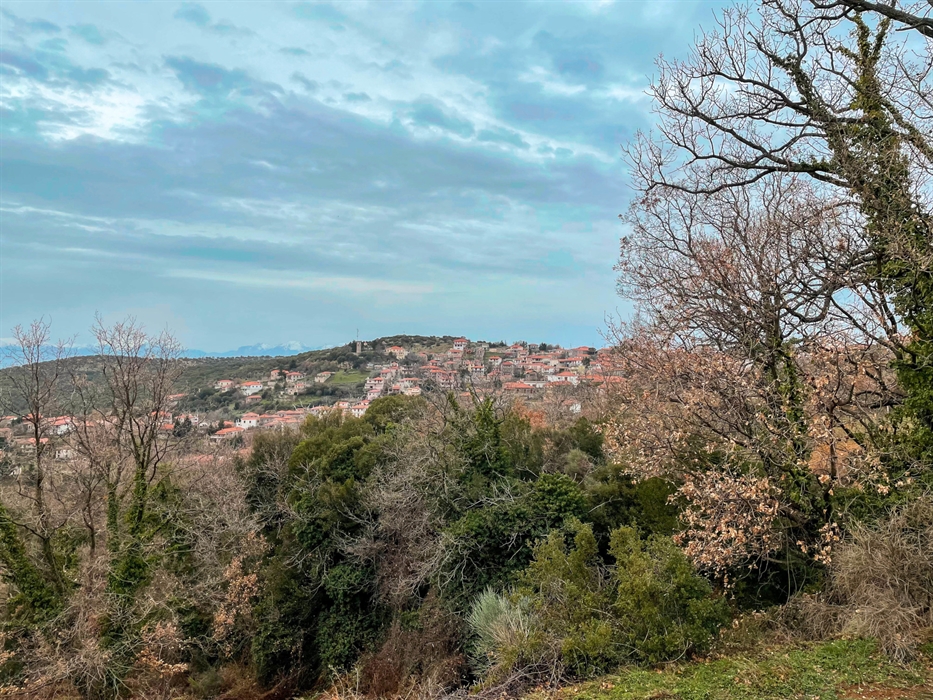Karyes, Laconia
This traditional and lively village is built on the foothills of Parnonas, at an altitude of 950 m, surrounded by chestnut and walnut trees. It is an ideal starting point for hiking and cycling on the trails of Caryatides Trails, and it has as its symbol a copy of a part of the Erechtheion of the Acropolis, with its famous Caryatids.
This traditional and lively village is built at an altitude of 950 m, surrounded by chestnut and walnut trees, on the foothills of Parnonas, on the borders of the Prefecture of Arcadia. It is an ideal starting point for hiking and cycling on the trails of Caryatides trails, a network of 7 marked hiking routes, with a total length of 57 km. The E4 European trail also goes through here.
In the Byzantine period, the village was called Arachova, which means place of walnut trees, and it was called like this up to the 20th century. It is separated into two neighbourhoods, Ano and Kato Karyes, where the square of Rachi lies. In the courtyard of the Church of the Dormition of the Mother of God, it’s worth seeing the centenarian plane trees, which locals call “of Menelaos”.
A beautiful bridge on river Deiros, built in 1886 by Italian builders, connects the main settlement with the neighbourhood of Pnigoura. On the main street at the entrance of the village, you’ll see two statues of Muses, donated by the Municipality of Athens. They used to decorate, together with others, Omonoia square in the Mid-war era, and were transferred here in the late 1950s.
The location where the village is built is known since the Antiquity, and there are references to the Sanctuary of Artemis Caryatid.
The Caryatids of Erechtheion and the copy in Karyes.
Karyes have been associates with the Caryatids, the six Korae, supporting the southern porch of the Erechtheion in the Acropolis of Athens, instead of columns. The term “Caryatids” is used by Vitruvius, who narrates that the women of Karyes in Laconia were punished by the rest of the Greeks and had to carry on their head the weight of all their clothes and jewellery, because their citty had assisted the Persians. According to Lucian, the women of Karyes were famous for their dancing with canisters on their head, in honour of goddess Artemis.
Remember that five of the Caryatids of the Acropolis are in Greece, whereas the sixth one is hosted in the British Museum, after its extraction in 1804 by Thomas Bruce, lord of Elgin. In 1979, the Korai were taken from the monument, so that they could be protected from air pollution, and they were transferred to the old Museum of Acropolis. Exact copies were put in their place. From 2009 onwards, they are housed in the new Museum of Acropolis.
The residents of Karyes built in 1983 a copy of part of the Erechtheion with the Caryatids, placed it in a prominent position and have made it their symbol.
There are various facilities in the village -pensions, tavernas and shops with local products, where you can buy chestnuts, walnuts, organic olive oil, olives, local wine, herbs, honey, traditional cheeses, sweets and pasta.
Distance from Sparta: 34 km
See more details on: http://www.karyes.gr
Location
Find the destination on the interactive map below.
Categories
Σχετικό περιεχόμενο χρηστών (UGC)
Ενημερωθείτε για ενδιαφέροντα θέματα γύρω από τον προορισμό μέσα από το περιεχόμενο των χρηστών μας
Discover 7 hidden gems of the Peloponnese
Many of you may have already visited some of the most renowned attractions…
TOP 10 archaeological museums in the Peloponnese
Olympia, Mycenae, Epidaurus, Diros Cave, Ancient Corinth, Messene and…
TOP 10 Castles in the Peloponnese
Castles galore! Mystras, Monemvasia, Palamidi, Methoni, Koroni,…
Newsletters
- About us
- FAQ's
- Map
- Tourism information centers
- Disclaimer
- Sitemap
- Our brand
- Media roum
- Adding your bussiness
- Corporate
- MICE

Peloponnese. Greece beyond the obvious





Design and creation from Cosmote
Marinas and Moorings
Diving centers
Get inspired
- Media gallery
- Blog
- The Peloponnese in the media
- Your feedback
- Users' general content
- Users' local products
- Users' events content
- Ask a local
More
- Accommodation
- Travel agencies
- Restaurants
- Services
- Destinations Map
- Weather
- Public transport
- Events
- Frequently asked questions
- Useful phones
- B2B
- Destination Data
- Contact

